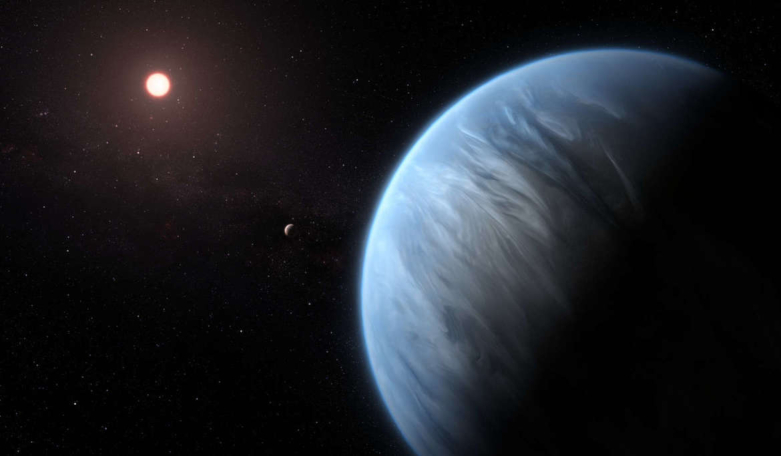Earth, its a great planet and we love it, but there are better worlds out there say a team of reseachers who have identified 24 "superhabitable" exoplanets that are potentially better than our own.
As a warm, temperate world at a favourable distance from the Sun, and with an abundance of liquid water on its surface, Earth is a planet like no other that we know of so far.
It stands to reason then, that in the search for life elsewhere in the Universe, our telescopes are trained on hunting for other Earth-like worlds that are of a similar size and orbit a Sun-like star. But should we limit our search there?
No, says Dirk Schulze-Makuc at Washington State University and colleagues who have recently identified two dozen planets outside our Solar System that may have conditions more suitable for life than our own.
"We have to focus on certain planets that have the most promising conditions for complex life,” says Schulze-Makuc, a professor with WSU and the Technical University in Berlin.
“However, we have to be careful to not get stuck looking for a second Earth because there could be planets that might be more suitable for life than ours."
What constitutes a world better than Earth then, you might ask.
Armed with a list of criteria, Schulze-Makuch, Rene Heller of the Max Planck Institute for Solar System Research and Edward Guinan of Villanova University started their search with planet-star systems where probable terrestrial planets could be orbiting within the host star's liquid water habitable zone.
Water is key to life as we know it and the authors argue that a little more of it would help, especially in the form of moisture, clouds and humidity.
Turning up the thermostat so that a planet had a mean surface temperature of about 5 degrees Celsius (or about 8 degrees Fahrenheit) greater than Earth, would be also better for life say Schulze-Makuch and colleagues.
When coupled with water, this extra warmth and moisture could lead to greater biodiversity - a situation that is mirrored here on Earth in tropical rain forests when compared with colder, drier areas.
Water and warmth are obvious indicators you could say, so what else? Size and mass also matter. A planet that is 10 percent larger than Earth should have more habitable land and if the mass was bumped up a little higher to 1.5 times Earth's mass, it would also have a stronger gravity to retain an atmosphere over a longer time period.
A larger planetary mass would also indicate a larger amount of interior heating through radioactive decay, leaving it habitable for longer.
Plate tectonics and a large moon at 1–10 percent of the planetary mass and at a moderate distance (10–100 planetary radii) also makes for a valuable target note the team in their research paper published recently in Astrobiology.
But, say Schulze-Makuch and colleagues, these characteristics mean little by themselves if a planet is too young or too old, adding that the sweet spot for life is a planet that is between 5 billion to 8 billion years old argue the researchers (bearing in mind that Earth is 4.5 billion years old).
Our Sun has a lifespan of around 10 billion years. That might seem an incredibly long time however it took nearly 4 billion years before any form of complex life appeared on Earth.
As such, G-type stars like our sun, might run out of fuel before complex life can develop. K dwarf stars on the other hand are less massive and less luminous but also have longer lifespans of 20 to 70 billion years and it might give orbiting planets a better chance to establish life say the team.
After applying these requirements to the 4,500+ known exoplanets discovered to date, Schulze-Makuch and colleagues found 24 top contenders for superhabitable planets.
None of them meet all of the criteria for superhabitable planets, but one – KOI 5715.01 – has three of the critical components, making it possibly much more comfortable for life than our home planet. The only downside is that all of candidates including KOI 5715.01 are more than 100 light years away.
Although not quite in our cosmic backyard, these planets should not be disregarded say the team, as the study could help focus future observation efforts, such as from NASA's James Web Space Telescope, the LUVIOR space observatory and the European Space Agency's PLATO space telescope when they become operational.
"With the next space telescopes coming up, we will get more information, so it is important to select some targets," said Schulze-Makuch.
However, there is a chance that some superhabitable worlds may already be hiding in current data and have gone unnoticed so far. Such a world, if found, “would deserve higher priority for follow-up observations in search of extrasolar life than the most Earth-like planets,” the authors state.
It should be noted that habitability does not mean these planets definitely have life, merely the conditions that would be conducive to life and although some features such as plate tectonics and land mass cannot currently be determined, future technologies may allow us to do so, add the authors.
"It's sometimes difficult to convey this principle of superhabitable planets because we think we have the best planet," Schulze-Makuch said.
"We have a great number of complex and diverse lifeforms, and many that can survive in extreme environments. It is good to have adaptable life, but that doesn't mean that we have the best of everything."











